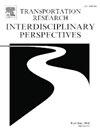Modeling the number of tourist arrivals in the United States employing deep learning networks
IF 3.9
Q2 TRANSPORTATION
Transportation Research Interdisciplinary Perspectives
Pub Date : 2025-04-07
DOI:10.1016/j.trip.2025.101407
引用次数: 0
Abstract
Tourism plays a vital role in the U.S. economy by generating billions of dollars in revenue annually, supporting millions of jobs across various sectors such as hospitality, transportation, and entertainment. It also fosters cultural exchange and economic growth in local communities, attracting both domestic and international visitors. Considering this importance, the number of tourist arrivals in the U.S. are modeled in this study employing deep learning networks. The number of tourist arrivals in the U.S. data for the last ten years is taken from the Office of Travel and Tourism Industries and then a deep learning artificial neural network is developed in Python programming language for modeling this data. The developed deep learning network is optimized considering the accuracy of the model. Then, the deep learning network is trained using the 70% of the available data while the remaining 30% is considered as the test data. The result of the deep learning network and the actual number of tourist arrivals data are plotted together which indicate high accuracy. In order to quantify the performance of the developed model, the performance metrics namely coefficient of determination, mean absolute error, mean absolute percentage error and the root mean square error are computed. The coefficient of determination of the developed model is found to be over 0.95 indicating the high accuracy of the model. The developed model is considered as a valuable tool for the assessment of the number of tourist arrivals in the U.S. for the planning and optimizing efforts in the hospitality sector.
利用深度学习网络对美国的游客到达人数进行建模
旅游业在美国经济中发挥着至关重要的作用,每年产生数十亿美元的收入,在酒店、交通和娱乐等各个领域提供数百万个就业机会。它还促进了当地社区的文化交流和经济增长,吸引了国内外游客。考虑到这一点的重要性,本研究采用深度学习网络对美国的游客人数进行了建模。美国过去十年的旅游人数数据来自旅游和旅游业办公室,然后用Python编程语言开发了一个深度学习人工神经网络来对这些数据进行建模。考虑到模型的准确性,对所开发的深度学习网络进行了优化。然后,使用70%的可用数据对深度学习网络进行训练,剩下的30%作为测试数据。将深度学习网络的结果与实际到达的游客数量数据绘制在一起,显示出较高的准确性。为了量化所开发模型的性能,计算了性能指标,即决定系数、平均绝对误差、平均绝对百分比误差和均方根误差。模型的决定系数大于0.95,表明模型具有较高的精度。所开发的模型被认为是评估美国游客抵达数量的有价值的工具,可用于规划和优化酒店业的工作。
本文章由计算机程序翻译,如有差异,请以英文原文为准。
求助全文
约1分钟内获得全文
求助全文
来源期刊

Transportation Research Interdisciplinary Perspectives
Engineering-Automotive Engineering
CiteScore
12.90
自引率
0.00%
发文量
185
审稿时长
22 weeks
 求助内容:
求助内容: 应助结果提醒方式:
应助结果提醒方式:


